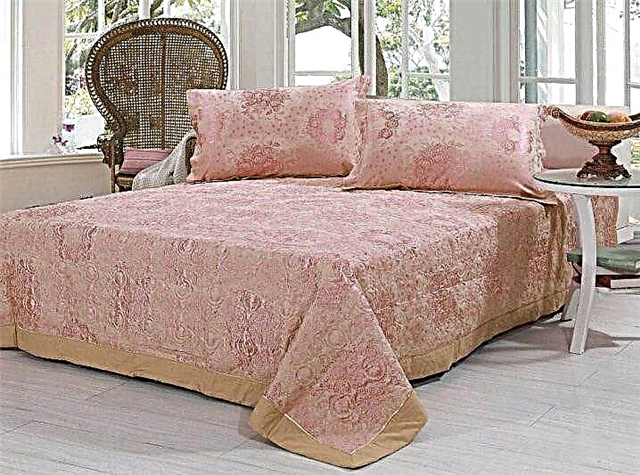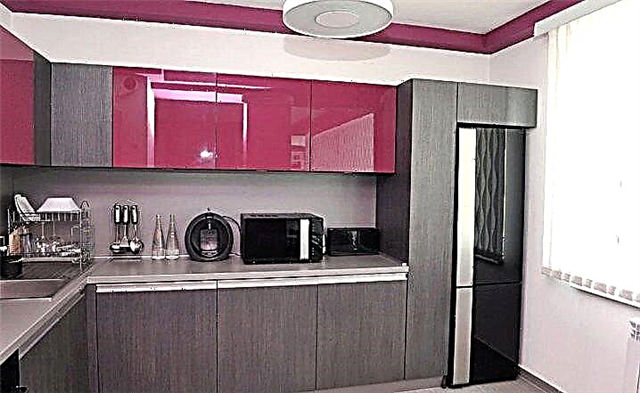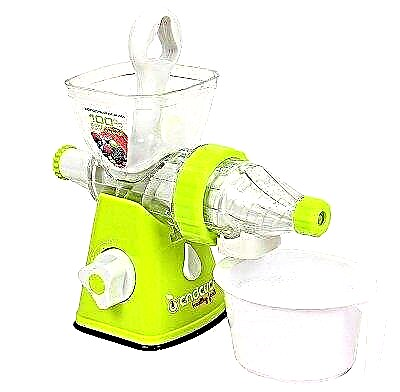 High-quality decorative finishing of any surfaces is a rather time-consuming process and requires compliance with all construction rules. In order to finally get the perfect interior or facade, you need to go through several stages of decoration.
High-quality decorative finishing of any surfaces is a rather time-consuming process and requires compliance with all construction rules. In order to finally get the perfect interior or facade, you need to go through several stages of decoration.
One of these stages is the filling of the base, which is done to level the surface and eliminate its small defects.
Our construction market has a number of different putty mixtures, one of which is basic putty. What is its feature, and what is the scope of this material?
Features and types of finished putty
At the construction site, you just have to stir the prepared putty in the bucket in which it is supplied, and, if necessary (in rare cases), add a little water. Using the ready-made mixture, you get a bonus - save time and effort. Another advantages include:
- convenient packaging from 0.3 to 30 kg,
- the absence of dust and excess pollution during the repair,
- excellent applicability to walls using vacuum equipment,
- high-quality coating of seams, corners,
- easy grinding, including mechanical grinding,
- increased productivity.
Ready putty, depending on its purpose, is divided into several types:
- leveling
- finish line
- universal
- specialized, for example, for wooden surfaces.
The composition of the putty is cement, gypsum, polymer. All of them have their own scope:

1. Ready putty with cement strong and durable, with excellent resistance to moisture, to harsh weather. At the same time, the walls lined with finished cement putty “breathe”. You can close up large surface defects with this putty, applying it for concrete and brick walls, for internal and external works.
2. Ready plaster putty It is used both as a starting and finishing wall decoration, as well as for closing small flaws, joints. It fits well on drywall, cement, gypsum fiber. Since the gypsum finished putty is moisture resistant and vapor permeable, you can use it for interior work in the bathroom, in the bathroom, in the kitchen. A fairly high setting speed makes it work quickly.

3. Acrylic Ready Putty also applied inside buildings and outside. And if you decide to use it for facade decoration, then it is necessary to carry out the subsequent coating with a primer and protect these layers with any materials intended for street work: tiles, siding, paint and so on. Acrylic putty is elastic, is applied with a layer of 3 mm without the formation of smudges, does not shrink, does not crack. It adheres perfectly to plastered walls or directly to brick and concrete. This is an environmentally friendly and harmless product, in addition, refractory. Acrylic putty can also be used for finishing. I advise you to store it at a positive temperature, as well, and use it for puttying the facade, because when it freezes, it loses its elasticity.


4. Latex finished putty It is mainly used for work in rooms with low humidity. Inside the buildings there are no surfaces with which it would be incompatible. Latex putty is characterized by the absence of odor, easy application and distribution over the surface - it can stretch to a layer of 1 mm. Just like acrylic putty, it can be used for facade decoration, but with weather protection. Unlike acrylic putty, it does not change its properties during short-term freezing. The material does not crack, is not subject to shrinkage, but has low vapor permeability. After work, it is advisable to immediately clean the floor surface and other contaminated surfaces from latex putty, because after drying this will not be easy.

5. The basis for covering the walls with paints and varnishes is finished oil-glue putty on drying oil. This is an inexpensive material for any surfaces, forming an even layer with good adhesion, strength, but it is not considered environmentally friendly. After drying, the finished oil-glue putty is perfectly ground, however, it does not have the property of moisture resistance. I do not recommend using a wallpaper sticker. It is used in rooms with normal humidity, both for leveling walls and for correcting small (up to 2-3 mm) defects.

6. Suitable for wallpaper ready-made putty based on PVA. It is used indoors with dry and wet microclimate. It has fungicidal and anti-mold properties, as well as a characteristic odor inherent in polyvinyl acetate. PVC-based putty remarkably evens out the surface and is easy to sand. Packaged in a small container for ease of consumption.

7. Ready putty for wood - a mixture designed to smooth out any defects on a wooden surface: chips, microcracks, dents in preparation for the finish. Criteria for the selection of putty on wood: the mass should be plastic (easy to level with a spatula), quick-drying, with a high degree of adhesion, environmentally friendly.
Tips for choosing a finished putty:
- When choosing a putty for wall decoration, do not use the “economy segment” mixture. As a rule, these are materials of lower quality, less durable, their consumption is many times more. Therefore, your savings will be very doubtful,
- you can save on the purchase of containers and a mixer for preparing a dry mixture, if you purchase a ready-made putty,
- when buying the finished mixture, choose "putty for interior work", then, working inside the house, you will be sure of the environmental cleanliness and safety of the material for the health of family members,
- so that upon purchase, make sure that the properties of the finished putty are preserved, see if the expiration date has expired,
- choose ready putty of famous brands - foreign and domestic,
- if there are differences on the surface of the walls, cracks in the drywall, or some kind of cracks and holes, then first use the starting ready putty in a fairly thick layer (from 0.5 to 1.5 cm), and after drying - the finish, which will remove all small cracks, the wall will be perfectly smooth,
- putty joints between gypsum boards or elements of another material from top to bottom, as if squeezing the mixture, while not saving material. When drying, the solution has the ability to compress, therefore, it is better to apply a thick layer, and after drying, remove excess,

And the main advice is to work carefully and unhurriedly, resulting in smooth, eye-pleasing surfaces that are durable in use.
It is possible to purchase ready-made putty from European and Russian manufacturers conveniently and simply in our online store of building materials Kuzmich24. Here you will find acrylic finish putty for interior use - Ceresit, universal latex putty and fine finishes for rooms with normal humidity - Sheetrock putty, ready-made putty for leveling and finishing “TEX”, wood putty WGT “Extra” and many more high-quality finishes materials.
Prices for starting putty
So to positive sides cement putty mixtures include the following qualities:
- Ease of applying the mixture to the base. Even a beginner can easily cope with the finishing work with cement-based plasters. The setting time is quite long so that you can eliminate the mistakes made.
- The ability of its starting compositions to level surfaces with differences of 5–15 mm.
- This material guarantees the resistance of the coating to low and high temperatures, moisture and other aggressive environmental influences.
- The instructions located on each packaging by the manufacturer give clear recommendations on the manufacture and use of the mixture.
- Cement-based putty has an affordable price, and this is one of the reasons why it is popular among consumers.
Disadvantages cement putty has a little:
- More granular structure of mixtures, in contrast to gypsum, latex or acrylic putties.
- Experienced craftsmen can blame her for the duration of the setting, that is, exactly what is considered a virtue for a beginner in finishing work.
According to destination
Depending on what function the putty performs (i.e. what it is intended for), four types can be distinguished:
- Putty for leveling. This is a starting putty, which is used at the initial stage, allows you to make the relief of the wall or ceiling even, hides traces, for example, left by screws, eliminates various cracks and chips if any. Efficiency of use, strength and long-term durability provides coarse dispersion of the composition and the application of a rather thick layer of about three centimeters. It dries quickly, almost impossible to grind. After applying this layer, the surface of the walls becomes rough.
As a rule, leveling putty is applied to a surface of brick or concrete. You can leave this layer without applying finishing putty, but it will not be possible to paint or stick wallpaper on such walls, instead, for example, panels will be a suitable option.

- Putty for finishing. It is applied in a thin layer, prepares the surface of walls and ceilings for decoration: painting, plastering or wallpapering. The fine-grained structure and plasticity of the building mixture make the walls absolutely smooth. Finishing putty is usually creamy and should only be used on smooth walls. The layer thickness is usually not more than 0.5 centimeters, a larger layer is more difficult to grind, moreover, cracks may appear on it after drying.
This type of mixture differs from leveling putty in lower strength. This putty is usually applied in several layers, allowing everyone to completely dry.

- Universal putty. It can be used both as a leveling and as a finishing putty. This type is suitable for any surface, provides a smooth and even coating without cracks, chips or other damage, completely ready for paint, wallpaper or plaster. However, such putty will be expensive. The material is strong enough, it is easy to grind. But in general, the quality of such a finish will be lower than the finish using start and finish putty.
As a rule, universal putty is used by those who have no experience with more professional mixes.

- Special putty "Seam". this is another type of filler mixtures, which is intended exclusively for minor repairs. Most often, joints of drywall are closed with such a mixture.

By degree of readiness
What are putties in appearance and packaging, what are their features? Putty can be dry or immediately ready to use. Dry putty is usually presented in powder form and diluted with water. This variety is usually sold in packages of 5-25 kilograms. Shelf life is one year. You can only store it in dry form, since the diluted composition dries quickly.
Ready putty is sold on a latex or dispersion basis in plastic buckets. This variety is quite popular among consumers. Special substances in the mixture usually provide long-term storage of the product. We will analyze the pros and cons of each variety.
Dry
Its main advantages:
- convenient dosage
- the possibility of choosing the consistency of the mixture,
- preparing the solution yourself is quite simple,
- can be stored for a long time in closed packaging at any temperature,
- low price.
- you need to have some skills to ensure high quality and durability of the finish,
- loss of basic properties, inability to use as intended in case of improper mixing,
- high drying speed, as a result - unsuitability for subsequent processing, which leads to difficulty in calculating the proportions, and also necessitates the use of putty immediately after dilution,
- it is likely to spoil the putty when moisture gets in or when stored in a room with high humidity.

Finished
Ready putty mixture has no less advantages:
- plastic,
- long shelf life even after opening the package,
- no need to knead, the ability to apply immediately after purchase,
- ease of application
- can be used not only for walls, ceilings, but also for wood, metal or drywall,
- the surface treated with the finished mixture has high strength, is resistant to moisture and damage,
- saving time on repairs.
The only negative is the high cost.

On a basic basis
There are various types of putties for internal work, which vary in composition:
- Based on gypsum. The constituent parts are gypsum, polymer additives, as well as various fillers. Gypsum putties are most effective for decoration in rooms with low humidity. This variety is intended for internal work to ensure the safety of gypsum from moisture. The material is fairly safe, odorless, and generally inexpensive. It has good thermal insulation and fire resistance, is elastic, has a white color.
The material "breathes", playing a role in creating a microclimate in the room. However, such a finish is easily damaged.

- Based on cement. Cement putty is suitable for interior work and exterior decoration. It consists of several elements - it is cement (for binding), sand (as a filler) and water (solvent). The main attention should be paid to sand - coarse-grained and clean sand will be most suitable. The water temperature should be about 20 degrees. After the cement-based putty has dried, the surface is to be ground. The shelf life of the mixture in diluted form is small, so it is better to use it within 5-24 hours.
The mixture is often used in rooms with a high level of humidity, for example, in bathrooms, kitchens, and bathrooms. However, cement putty is not suitable for wooden coatings. The disadvantages will be quite a granular composition, a yellow tint and inelasticity.

- Polymer putty. It is a universal mixture for cement, concrete, gypsum or polyurethane surfaces. Usually has a high cost. Subdivided into acrylic and latex putty, it is environmentally friendly, safe and flexible material.

- Water-dispersion putty. It is used on concrete, brick, aerated concrete, wood, stone and other types of surfaces.

- Oil-glue mixture. As a rule, it is used on wooden or concrete surfaces, prepares walls and ceilings for applying enamel, oil or water dispersion paint. It is a mixture of glue, varnish with chalk and some additives. Effective when working with a damp surface, for example, window spans, doors, window sills and the like. You can use it to eliminate defects.
Such a mixture is characterized by low cost, but it also has some disadvantages - it is short-lived, the components that make up its composition can be harmful to health.

- Acrylic Usually used at the final stage to create a flat surface for subsequent painting, is adhesive and weatherproof.A chemical universal acrylic putty with a fine-grained structure, which is easy to sand, is also distinguished. It is resistant to damage. It can be applied both with a thin and a thick layer, it is environmentally friendly, safe and of high quality.

- Latex. Most often it is treated with drywall, seams, niches or arches, but it can get damaged by low temperature. It is quite plastic and durable, it is simple and easy to use.

- Front acrylic mix. This is a separate subspecies of acrylic putty, it is moisture resistant, it is convenient to use on surfaces made of concrete, wood or plaster. It is practically not damaged, it is durable, fast drying, easy to sand.

- Putty of a highly specialized orientation - chakril. It is used for plinths and leveling walls after plastering. After it, the surface is perfect for tiling or whitewashing.

How to make the right choice?
Before purchasing this building material, carefully study the instructions, scope and properties. Based on your own preferences, decide what is best - to buy putty dry or ready-made. Choose a composition in accordance with the type of surface, working conditions, and also consider the purpose of the mixture.
It should be noted that if the surface needs to be prepared for wallpapering, it is better to buy a dry mixture. Also in this case, a white shade of the putty surface will be a better option.
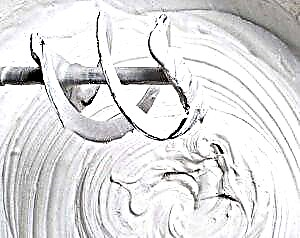
When carrying out internal work, it is not recommended to use putty with sand filler. Specialists advise purchasing putty materials from the same manufacturer, as they, as a rule, have the greatest compatibility.
Attention should be paid to the expiration date, as a rule, it is no more than 12 months. After the expiration of the storage period, the putty begins to lose its properties, its use will not be effective.
The purchase of a universal mixture, for example, acrylic, which is recommended for beginners, will help reduce the risk of making a wrong choice.
Types of putties
The whole variety of putty compounds offered by building supermarkets can be conditionally divided into several groups:
- In its composition, building putties can be gypsum, cement, lime, polymer, bitumen, etc.
- According to the method of application - two-component and one-component. Two-component compositions are characterized in that for the preparation of a ready-to-use solution from them, two different components must be mixed that react with each other. One-component mixtures are already ready for use (or diluted with water).
- In the field of application, putty compositions can be: for external or internal work, finishing or basic. Let us dwell on the latter variety.
Putties are applied on pre-primed surfaces. When choosing a particular type of soil composition, their compatibility should be considered.
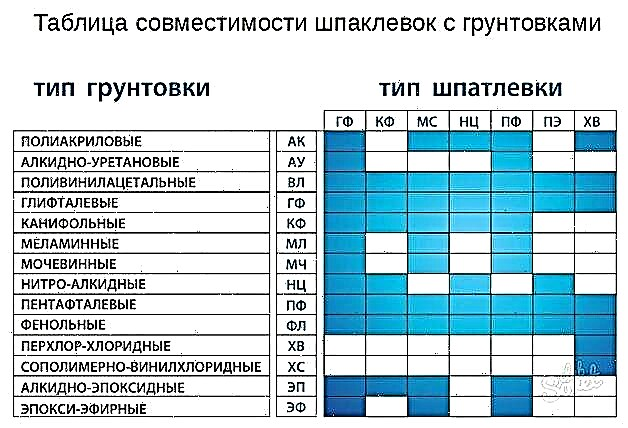
Scope of basic putty
 The word "basic" in this case should be understood that this composition is intended to create a base, foundation, before applying some final, finishing coating.
The word "basic" in this case should be understood that this composition is intended to create a base, foundation, before applying some final, finishing coating.
In their composition, all basic building putties are divided into two large groups:
Each of these groups has its own technical features and a recommended field of application.
Cement
A basic cement putty is used to level load-bearing substrates made of brick, concrete, cinder blocks, etc. That is, the scope of its application is for the most part “bare” walls, which need to be prepared for further finer finishes.
In this sense, it has much in common with stucco solutions, differing from them in filler with a smaller fraction size. This allows you to get a more even and smooth surface when finishing.
The base mix, created on the basis of cement, is also ideal for eliminating minor imperfections remaining after plastering the surface.
Such a plaster composition is practically universal and suitable for performing external and internal works, including in rooms with high humidity.
Gypsum
Basic putty, created on the basis of gypsum, is a more whimsical material. It has a finer texture and, unlike cement, is closer to finishing putties than to stucco compositions.
In addition, the gypsum base mixture can, if necessary, be used as a finish. So, it can be used to seal cracks and seams immediately before sticker wallpaper or painting.
Finishing the walls before painting is best done with gypsum putty. Its white color serves as a neutral background for any coloring compounds, which can not be said about the gray cement putty.
Among the minuses of gypsum putties, it should be noted that their scope is limited to internal interiors, and even then, rooms with normal humidity. This is due to the poor resistance of gypsum to water: with excessive moisture, gypsum softens, losing its properties.
Specifications
Basic building putties have excellent adhesion (adhesion coefficient) with any mineral surface and are intended for application with a layer of 5 to 10 mm. With their help, you can prepare the bearing base for any further decoration, close up cracks and cracks on the surface of the wall, etc.
Dry mixes consist of a filler, which is quartz sand of various fractions (from 0.1 to 0.5 mm), a binder component (gypsum or cement) and polymer additives.
Additives are designed to improve the quality of the finished solution - increase ductility and adhesion, increase the survivability, make them resistant to aggressive environmental influences. From the use of certain additives, and from their percentage in the total mass of the composition, the technical characteristics of the putty and the permissible area of its application largely depend. An overview of the basic plasters see in this video:
 The main requirements for basic putties:
The main requirements for basic putties:
- when dried, they should form a smooth, as smooth surface as possible,
- have excellent adhesion to the treated surface,
- be sufficiently flexible and easily leveled over the entire area of the base.
The following are approximate technical specifications that basic putties should comply with.
| № | Consumption with a layer thickness of 1 mm per 1 sq. M | 0.9 - 1 kg |
|---|---|---|
| 1 | The thickness of the solution layer, mm | The thickness of the solution layer, mm 0.5 - 8 |
| 2 | Solution viability | 2 - 2.5 hours |
| 3 | Work and base temperature | from +5 ° С to +30 ° С |
| 4 | Compressive strength | 10 MPa |
| 5 | Grip strength | 0.6 MPa |
Surface preparation
Before applying the putty mortar on the surface, the base must be carefully prepared. It should be carefully cleaned from dust, dirt, from weakly holding and crumbling inclusions. For more information on how to prepare the wall for puttying, see this video:
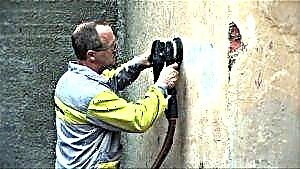 Cracks and cracks should be widened to 2-3 mm with a spatula or knife. Then the entire surface is cleaned using abrasive materials.
Cracks and cracks should be widened to 2-3 mm with a spatula or knife. Then the entire surface is cleaned using abrasive materials.
If you want to putty a smooth glossy surface, it must be pre-treated with sandpaper or a sanding machine to make it rougher. All dust formed during this process should be removed with a vacuum cleaner or a damp sponge.
 After that, the entire surface to be treated is primed using compounds compatible with this type of putty. Apply the composition with a roller or brush, depending on the area of the treated surface.
After that, the entire surface to be treated is primed using compounds compatible with this type of putty. Apply the composition with a roller or brush, depending on the area of the treated surface.
After applying the first coat, wait until it is completely dry and apply a second coat of primer.
Soil composition will allow to strengthen the processed surface, as well as significantly increase adhesion with putty.
Solution preparation
Basic putties can be sold either in a ready-to-use form or as a dry mix for solution preparation.
In the first case, the solution is packaged in plastic or metal buckets of various capacities. As a rule, in the form of ready-made solutions, polymer and two-component putties are supplied to the market.
Mixtures on a cement and gypsum basis, due to the short shelf life of the finished solution, go on sale in the form of dry powder, packaged in paper bags. For the same reason, when diluting a solution, one should not prepare too much of it. The approximate consumption of the finished solution can be found in the instructions for use, which is available on the package.
 Add water strictly in accordance with the instructions.
Add water strictly in accordance with the instructions.
To prepare a ready-to-use solution from a dry mixture, dilute it with water in the proportions specified in the instructions. Typically, the ratio is 3-4 parts of the dry component and 1 part of water. That is, for a 20 kg bag of the mixture you will need about 6 liters of water.
When kneading, the right amount of water is first poured into the tank, after which the dry composition is poured. The resulting solution is mixed with a construction mixer until a homogeneous mass is obtained. The consistency of the finished stock solution should resemble thick sour cream.
The solution should be left for 5 to 10 minutes. During this time, the water will thoroughly soak all the components of the dry composition, after which the solution should again be beaten with a mixer.
Putty application
When applying putty on the wall, you should also observe some nuances. First of all, this is the temperature regime and permissible humidity.
Work with the base solutions should be in the range of outdoor temperatures from +5 to +35 degrees C. The most comfortable humidity for working with the base plaster is 55 - 70%.
The choice of tools for applying the solution depends on what area you want to apply the solution to. A small spatula is suitable for filling narrow cracks, and a wide spatula is better for leveling large surfaces.
In addition, for applying basic putty on large surfaces, an automated method can be used - using a paint station. It is an apparatus consisting of a hopper for preparing a mixture and a compressor spraying the finished mixture onto the wall with compressed air. This method is used in industrial construction, when it is necessary to process with base putty significant in size premises or building facades.
 Guide the spatula with the mixture along the crack.
Guide the spatula with the mixture along the crack.
When working with a spatula, the following technology is observed. To putty the cracks, you should use a tool with a blade width of 3-5 cm. The solution is first applied across the direction of the crack with some pressure so that it fills the entire gap space to the full depth.
After this, the putty is smoothed out by moving the spatula along the direction of the crack. To work with the planes, two spatulas will be needed: one with a width of 30-60 cm, and the other 10 cm. The solution from the container is scooped with a narrow spatula and evenly spreads over the entire surface of a wide tool.
 Then putty is applied to the plane with a wide, sweeping, but at the same time smooth movement. The direction of movement of the tool does not play a special role, but to get a thinner layer of putty, the putty knife should be kept at an acute angle to the machined plane.
Then putty is applied to the plane with a wide, sweeping, but at the same time smooth movement. The direction of movement of the tool does not play a special role, but to get a thinner layer of putty, the putty knife should be kept at an acute angle to the machined plane.
After the entire surface has been processed, the putty is left to dry. The full drying time of the mixture is indicated in the technical specification, but may vary depending on the temperature and humidity in the room. After the base layer has dried, you can begin to apply the finishing putty, wallpapering, painting, etc.

